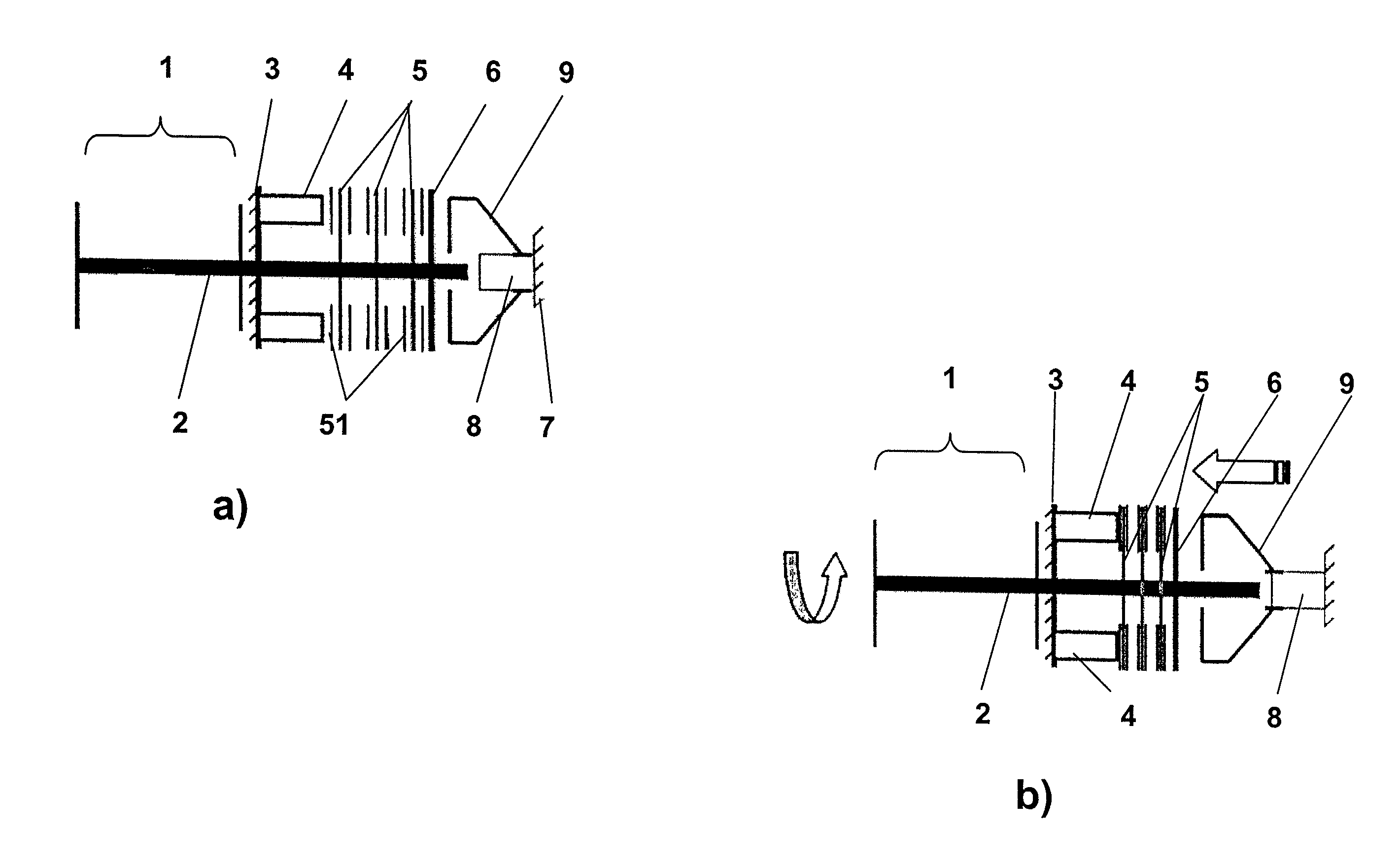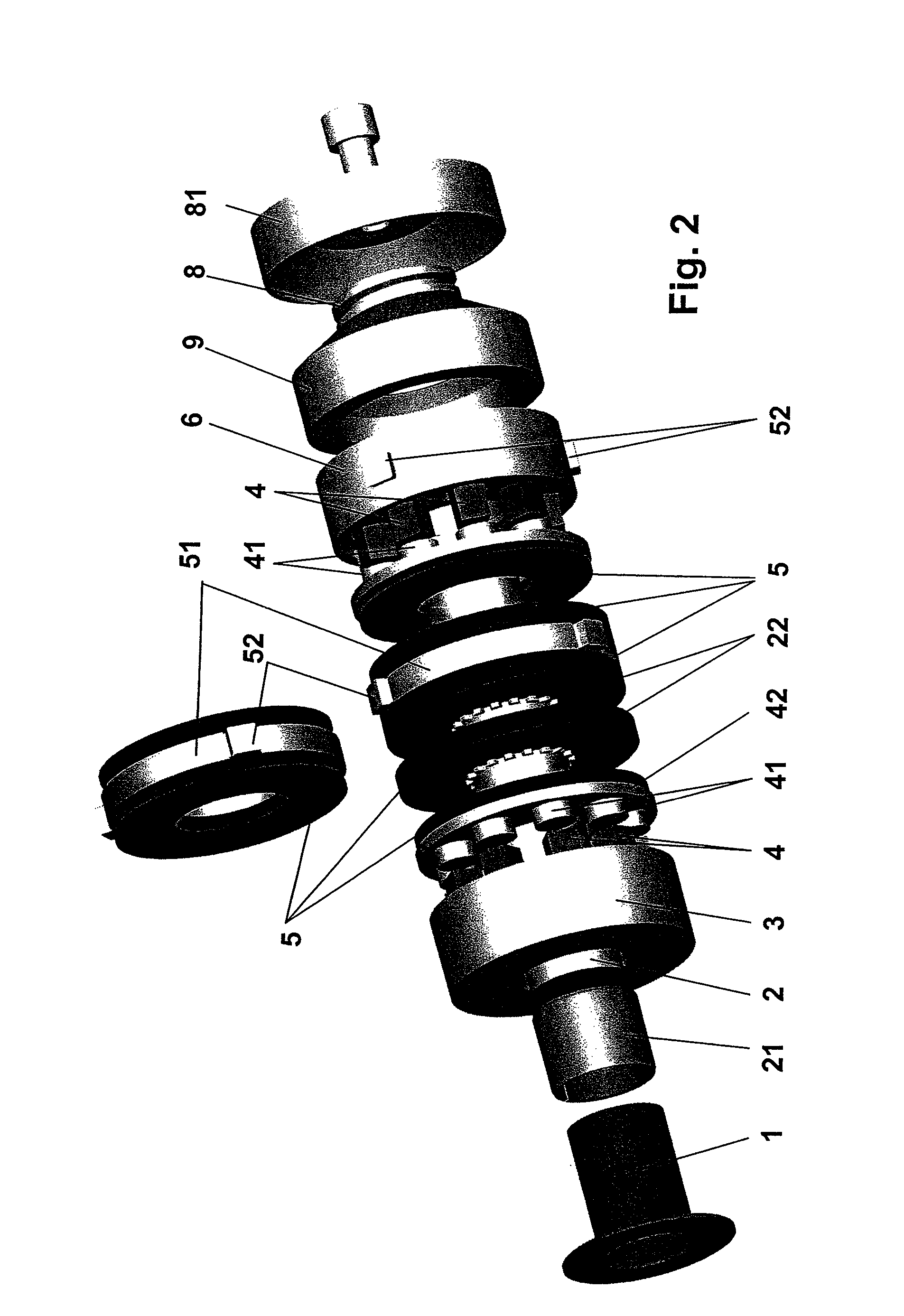Device and method for tightening a safety belt serving to protect occupants in a vehicle
a technology for safety belts and occupants, applied in vehicle safety belts, axially engaging brakes, seating furniture, etc., can solve the problems of high design cost, inability to achieve adaptive systems which guarantee the braking of safety belts, and cannot be independent of accident seats and passengers. , to achieve the effect of low failure potential
- Summary
- Abstract
- Description
- Claims
- Application Information
AI Technical Summary
Benefits of technology
Problems solved by technology
Method used
Image
Examples
Embodiment Construction
[0024]FIGS. 1a and b show a schematized belt brake which, in the case of FIG. 1a, is in the first position, that is in the state of rest, in which the safety belt (not shown) is wound more or less completely onto belt drum 1. Belt drum 1 has a belt shaft 2, which projects unilaterally from belt drum 1, along which are arranged subsequent components comprising the belt brake 5. A thrust bearing 3, which is not necessarily arranged in a rotationally fixed manner, but with a fixed axial position relative to belt shaft 2, is provided immediately adjacent to belt drum 1. Thrust bearing 3 is preferably designed in the shape of a disc and has at least two and preferably a multiplicity of actuator elements 4 distributed uniformly along the disc on the disc side facing away from belt drum 1. The actuator elements are each advantageously piezo stacking actuators discs of the brake, which are connected in a rotationally fixed and axially displaceable manner to belt shaft 2, are connected along...
PUM
 Login to View More
Login to View More Abstract
Description
Claims
Application Information
 Login to View More
Login to View More - R&D
- Intellectual Property
- Life Sciences
- Materials
- Tech Scout
- Unparalleled Data Quality
- Higher Quality Content
- 60% Fewer Hallucinations
Browse by: Latest US Patents, China's latest patents, Technical Efficacy Thesaurus, Application Domain, Technology Topic, Popular Technical Reports.
© 2025 PatSnap. All rights reserved.Legal|Privacy policy|Modern Slavery Act Transparency Statement|Sitemap|About US| Contact US: help@patsnap.com



